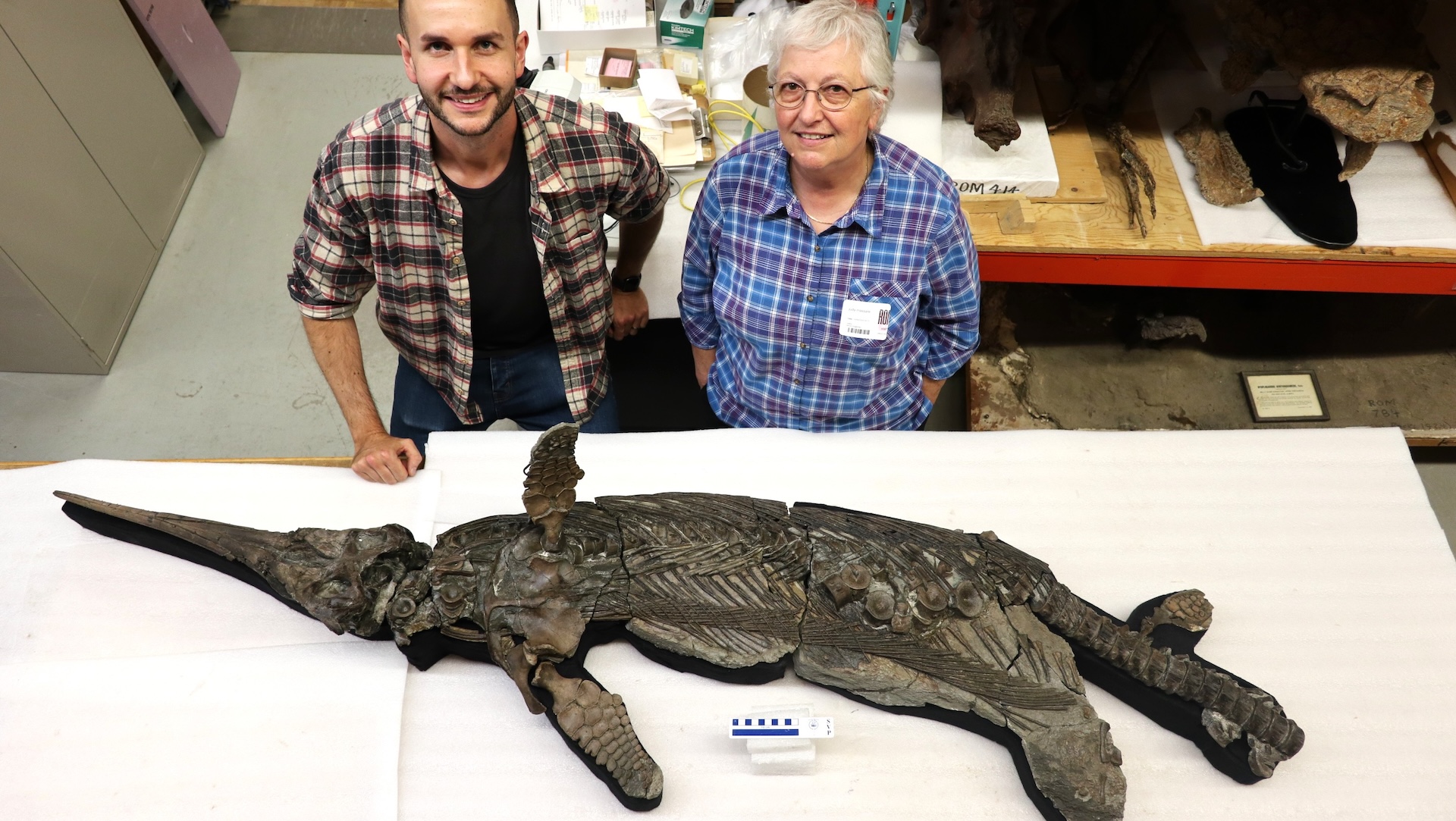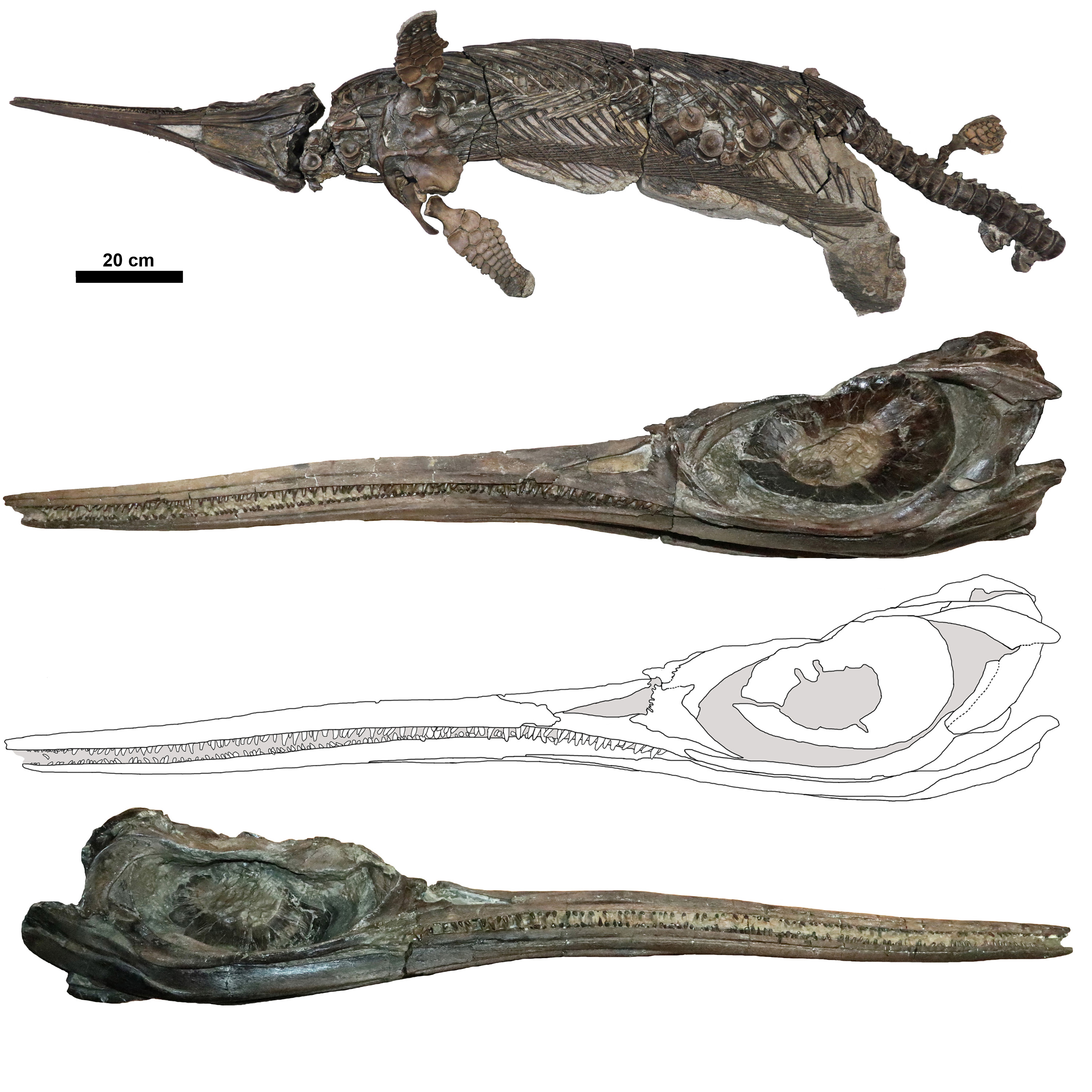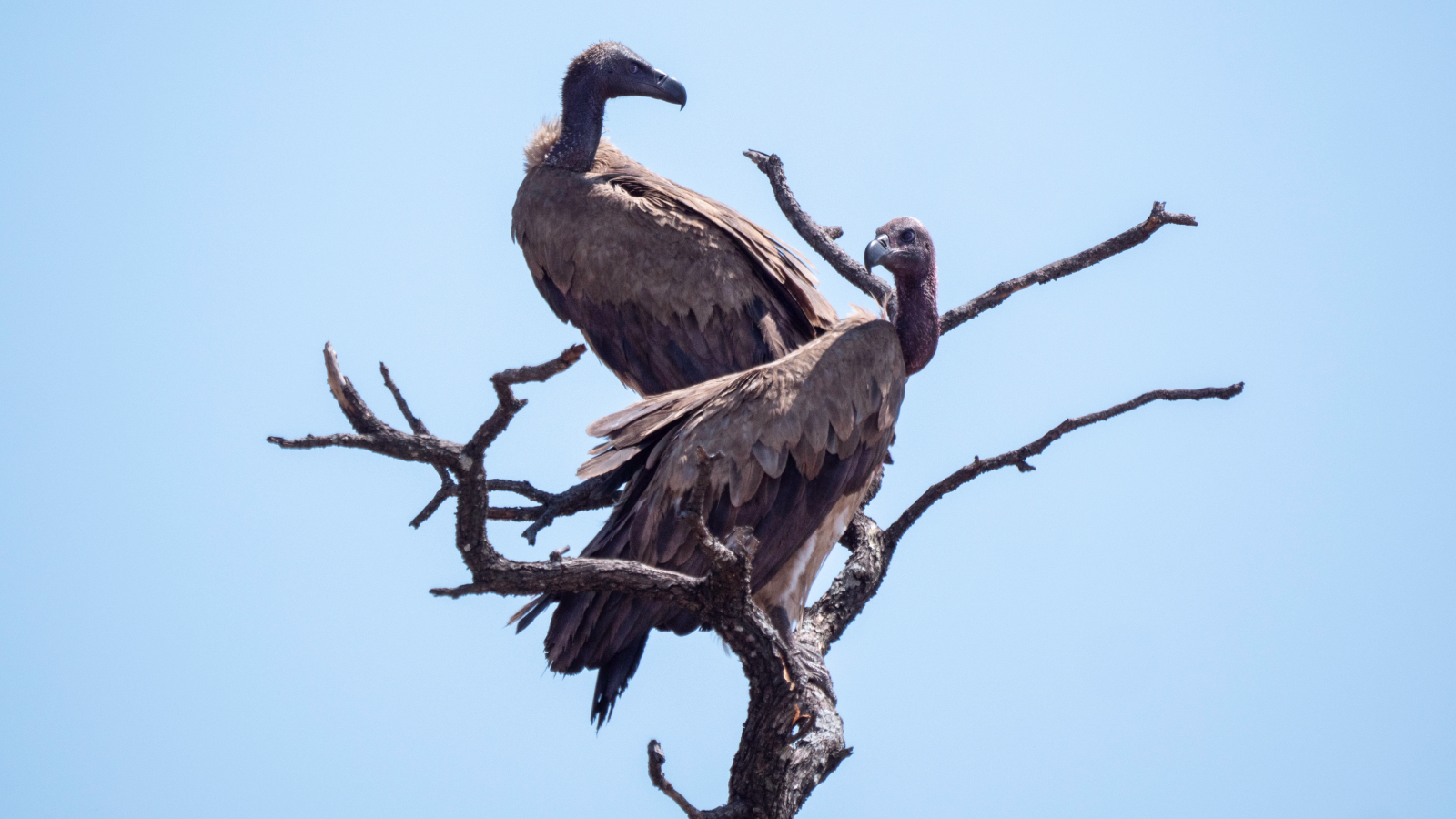New species of Jurassic 'sword dragon' could help solve an evolutionary mystery
The newly discovered ichthyosaur dubbed Xiphodracon goldencapsis was about 10 feet long and had a sword-shaped snout.

A nearly complete fossil skeleton found on the U.K.'s Jurassic Coast represents a newly identified species of ancient marine reptile that lived alongside dinosaurs.
The ichthyosaur, dubbed Xiphodracon goldencapsis, was likely around 10 feet (3 meters) long when it lived, according to a study published Friday (Oct. 10) in the journal Papers in Palaeontology. It had large eye sockets and a long, narrow snout shaped like a sword.
The specimen dates to a period in the Early Jurassic known as the Pliensbachian, which lasted from about 193 million to 184 million years ago. By studying an ichthyosaur fossil from this period, scientists could learn more about a critical point in these aquatic animals' evolution, according to the study.
Fossil collector Chris Moore found the remains in 2001 along the Jurassic Coast, a 96-mile (154 kilometers) stretch of seaboard in Dorset known for being a treasure trove of fossils.
Moore sold the fossil to the Royal Ontario Museum in Canada shortly thereafter. Although it was identified as an ichthyosaur, it wasn't studied in detail until recently.
"I remember seeing the skeleton for the first time in 2016," study co-author Dean Lomax, a paleontologist at the University of Manchester and the University of Bristol, said in a statement. "Back then, I knew it was unusual, but I did not expect it to play such a pivotal role in helping to fill a gap in our understanding of a complex faunal turnover during the Pliensbachian."

The new genus name, Xiphodracon, comes from the Greek words "xiphos," meaning sword, and "dracon," meaning dragon — a reference to ichthyosaurs' "sea dragons" nickname. Its species name, "goldencapsis," comes from Golden Cap, the site on the Jurassic Coast where the ichthyosaur was found.
Get the world’s most fascinating discoveries delivered straight to your inbox.
The fossil also hints at how the individual ichthyosaur lived and died.
"The limb bones and teeth are malformed in such a way that points to serious injury or disease while the animal was still alive, and the skull appears to have been bitten by a large predator — likely another much larger species of ichthyosaur — giving us a cause of death for this individual," study co-author Erin Maxwell, curator of fossil aquatic vertebrates at the State Museum of Natural History Stuttgart in Germany, said in the statement. "Life in the Mesozoic oceans was a dangerous prospect."
X. goldencapsis could also help to clarify a major shift in ichthyosaur speciation in the early Jurassic. Although scientists have found many ichthyosaur fossils from before and after the Pliensbachian, the two groups have very few species in common, suggesting a major turnover sometime during the Pliensbachian. In fact, ichthyosaur fossils from the Pliensbachian period are rare.
The newly discovered ichthyosaur "is more closely related to species in the later Early Jurassic … and its discovery helps pinpoint when the faunal turnover occurred, being much earlier than expected," Lomax said. In other words, the shift likely occurred in the early Pliensbachian. However, scientists don't yet know what caused this upheaval.
For now, the X. goldencapsis fossil will be displayed at the Royal Ontario Museum.

Skyler Ware is a freelance science journalist covering chemistry, biology, paleontology and Earth science. She was a 2023 AAAS Mass Media Science and Engineering Fellow at Science News. Her work has also appeared in Science News Explores, ZME Science and Chembites, among others. Skyler has a Ph.D. in chemistry from Caltech.
You must confirm your public display name before commenting
Please logout and then login again, you will then be prompted to enter your display name.
